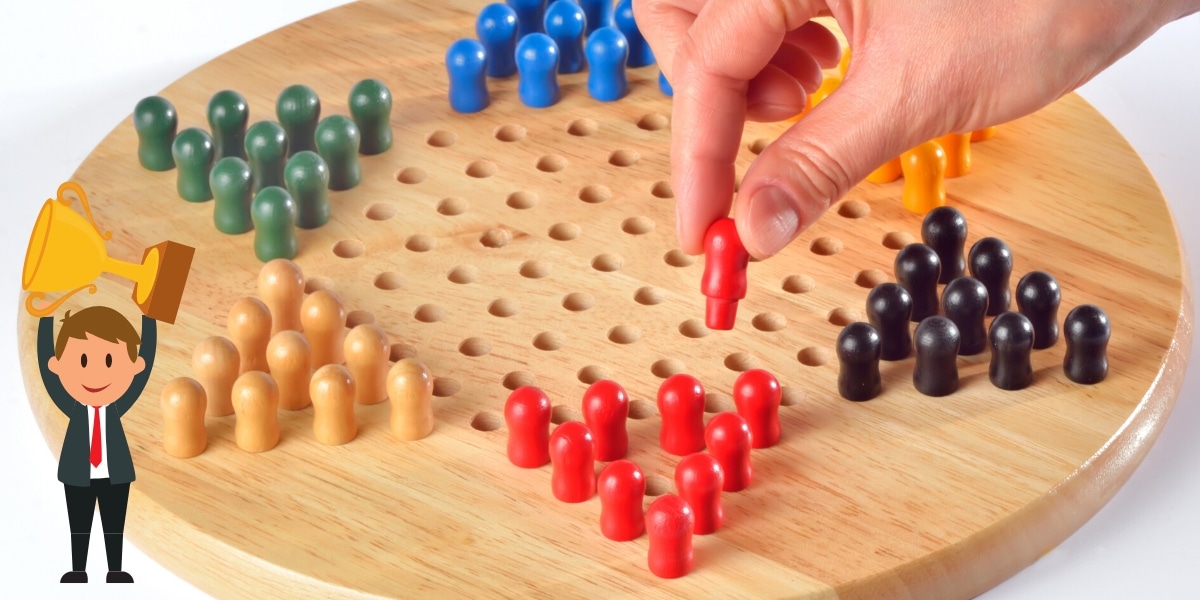

The first team to advance both sets to their home destination corners is the winner. When playing teams, teammates usually sit at opposite corners of the star, with each team member controlling their own colored set of pieces. Starting layouts Six players Ĭan be played "all versus all", or three teams of two. (In some instances a player may choose to stop the jumping sequence part way in order to impede the opponent's progress, or to align pieces for planned future moves.) It is not mandatory to make the most hops possible. Red might advance the indicated piece by a chain of three hops in a single move. A hop consists of jumping over a single adjacent piece, either one's own or an opponent's, to the empty space directly beyond it in the same line of direction. In the diagram, Green might move the topmost piece one space diagonally forward as shown. Turns proceed clockwise around the board. There is no capturing in Sternhalma, so pieces that are hopped over remain active and in play. A player may not combine hopping with a single-step move – a move consists of one or the other. Players take turns moving a single piece, either by moving one step in any direction to an adjacent empty space, or by jumping in one or any number of available consecutive hops over other single pieces. In "hop across", the most popular variation, each player starts with their colored pieces on one of the six points or corners of the star and attempts to race them all home into the opposite corner. (On bigger star boards, 15 or 21 pieces are used. Each player has 10 pieces, except in games between two players when 15 pieces are used. The aim is to race all one's pieces into the star corner on the opposite side of the board before the opponents do the same. Consider all openings and pathways available on the board.A single move can consist of multiple hops each piece hopped must be directly adjacent, and hops can be in any direction. Look AheadĪs with all strategy games, looking at the entire playing field and using intentional forethought is critical for mastery. You may want to discuss this strategy in advance with your opponents because it can be viewed negatively. If a player needs your space to be vacant to move his or her marbles in, this is a sneaky little strategy that might buy you some time. If you are an “anything goes” gamer, you may be inclined to leave one of your marbles in the home triangle to keep an opponent from winning! You can hop over your own marbles to funnel quickly into the area. Leaving marbles behind can slow you down and make it easier for your opponents to block you.Īnother strategy is skipping a space between each marble upon entering your destination. If possible, move marbles from the back to the front of the pack to keep your pieces moving together in a group. The quicker you get your marbles moving toward the opposing triangle, the better your chances are of winning the game! This is a handy trick for double-time movement across the board.

Remember, when you leave an opening or space between two of your pegs, you can jump marbles, as long as there is an available space after it. With either of these options, you are opening the gate to allow easier movement for your marbles to transfer across the board. The Cross Caterpillar opening move is similar to the Sidewinder, however, instead of moving your front corner peg outward, you’ll move the peg toward the inside of the board. This action creates an exit for the pegs following the initial row. To play the Sidewinder opening move, diagonally move the peg in the front corner of your lineup towards the outer edge of the board. The points of the star on the game board form a triangular shape where your pegs begin and end the game. One important Chinese Checkers strategy for winning the game is to utilize specific beginning moves to maximize your gameplay. The overall objective of Chinese Checkers is to successfully move all your pegs across the board before your opponents. Then read this guide, as the strategies discussed here will help you win at any Chinese Checkers game. Read on to learn more about Chinese Checkers’ strategies.īefore we discuss the various strategies, if you’re really new to Chinese Checkers, then I suggest you check out our Chinese Checkers rules game guide first. Jumping is one of the most significant strategies for winning the game. Developed in Germany around 1880, Chinese Checkers was derived from a European game called Halma, meaning jump.


 0 kommentar(er)
0 kommentar(er)
